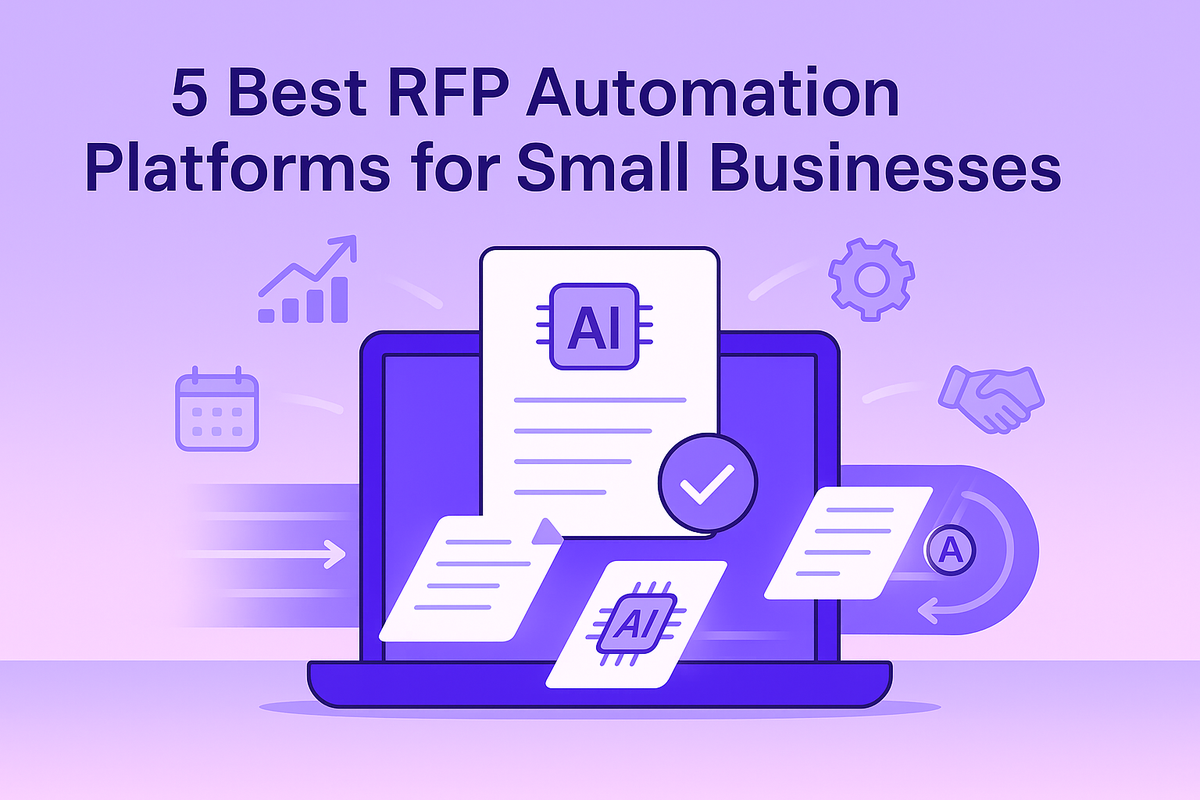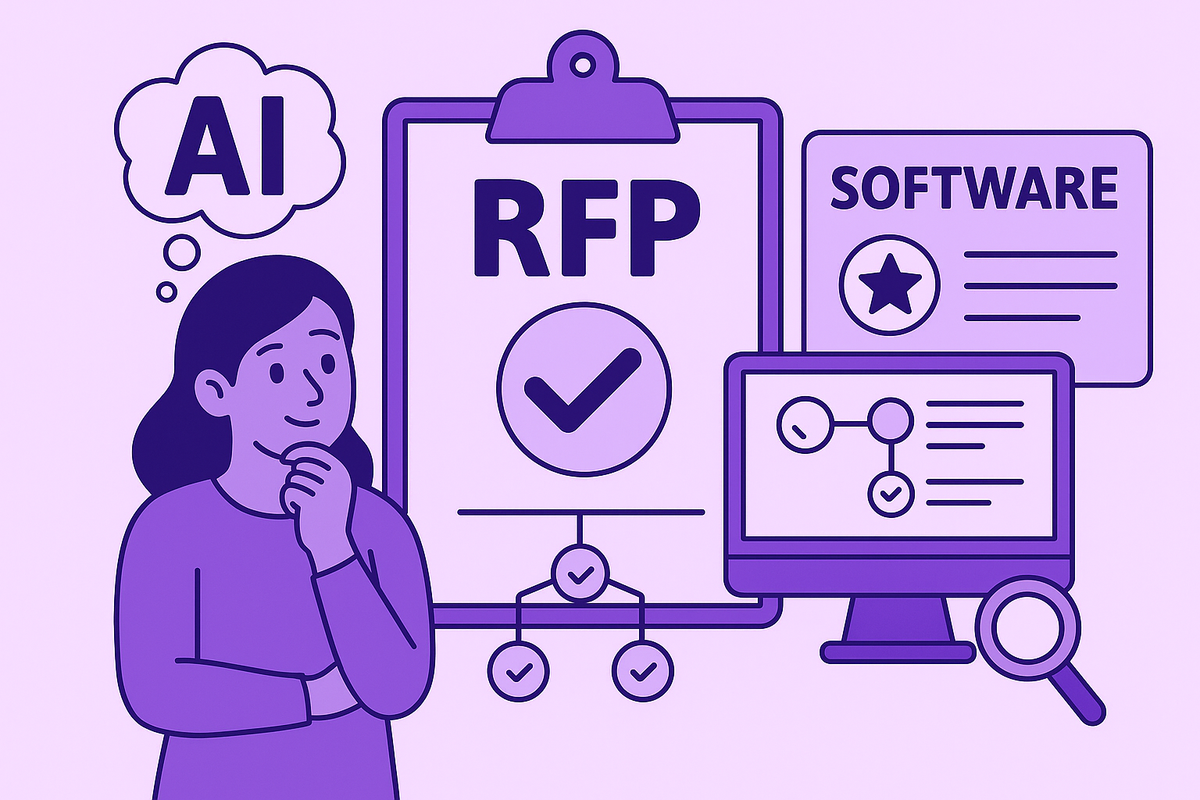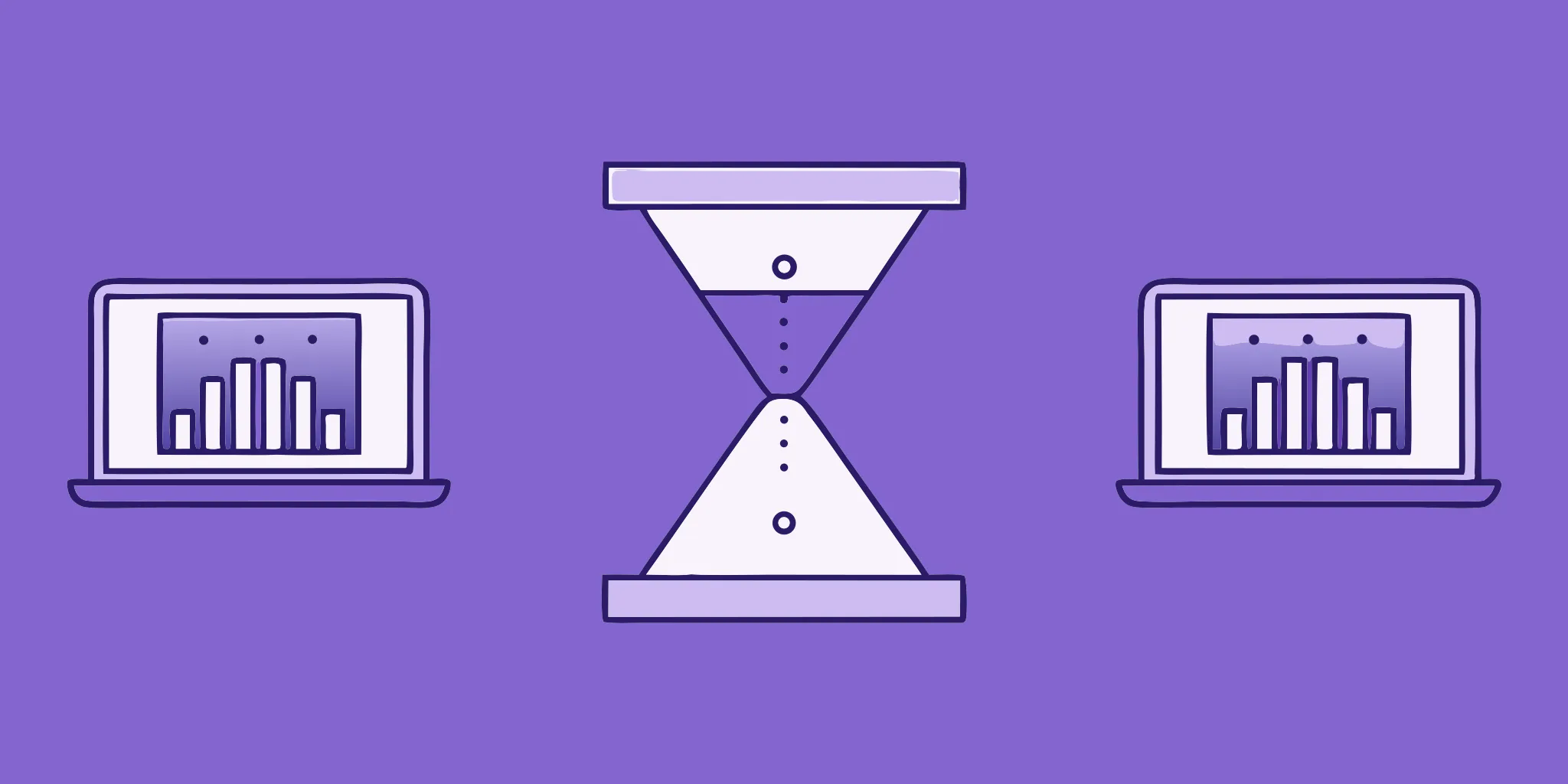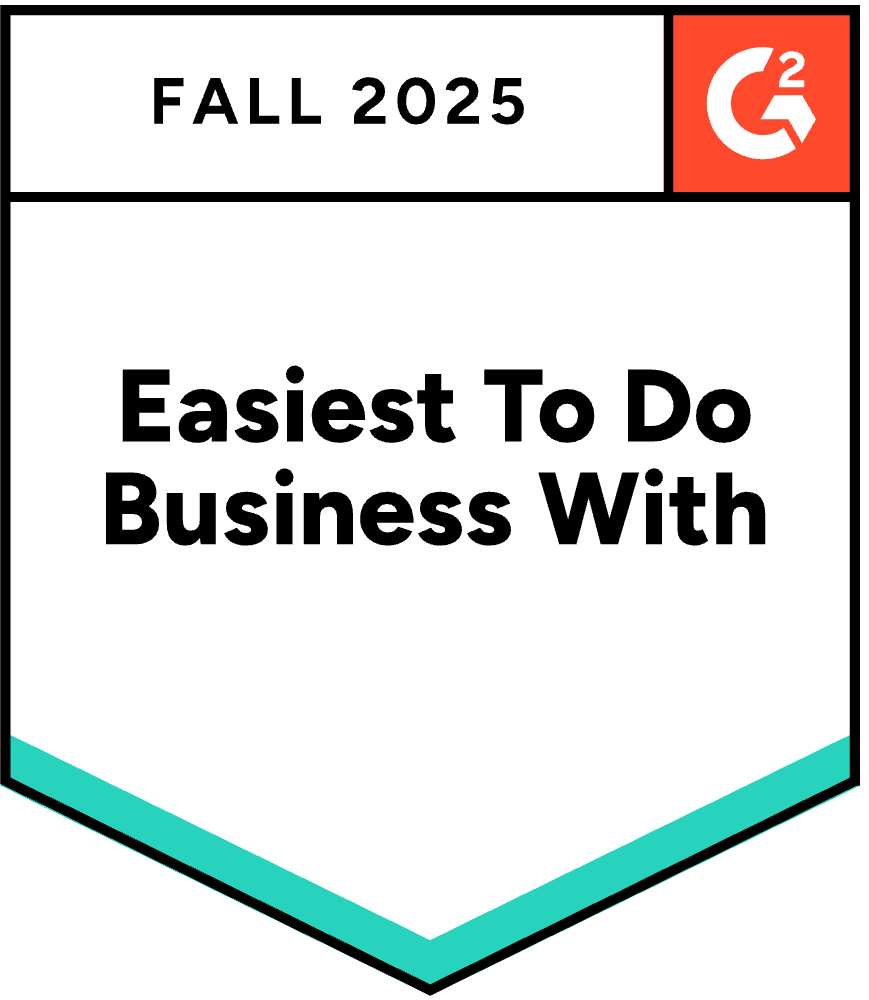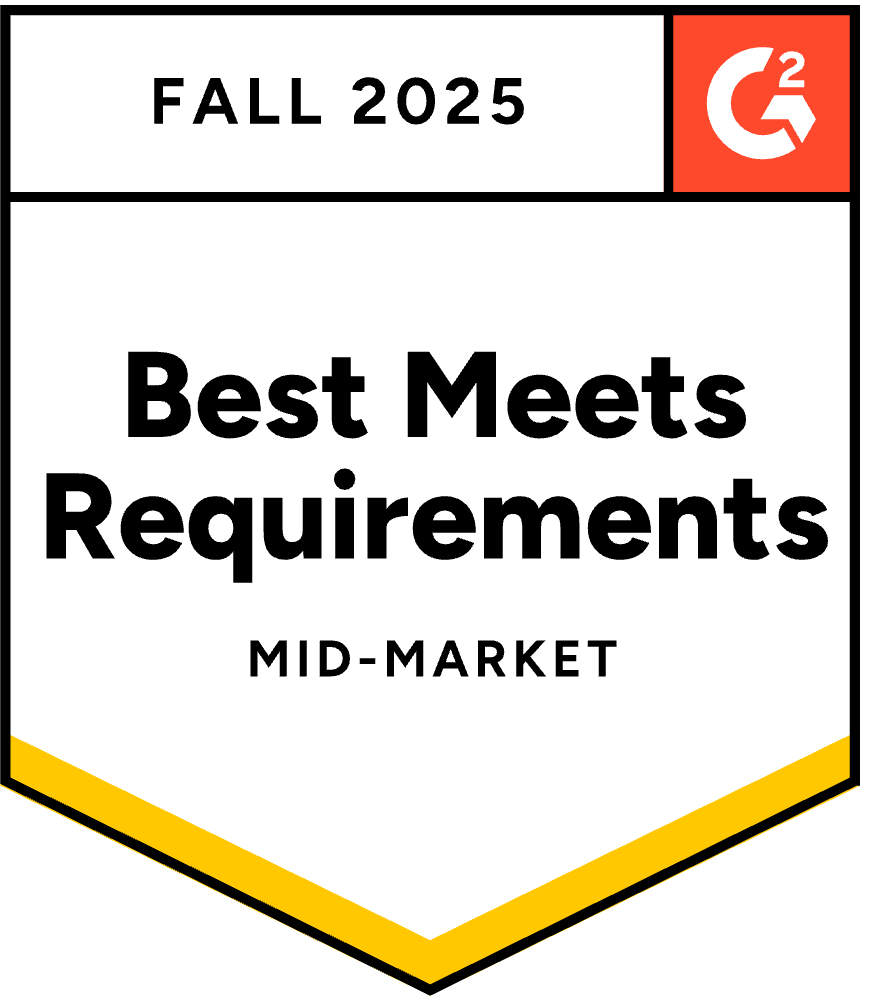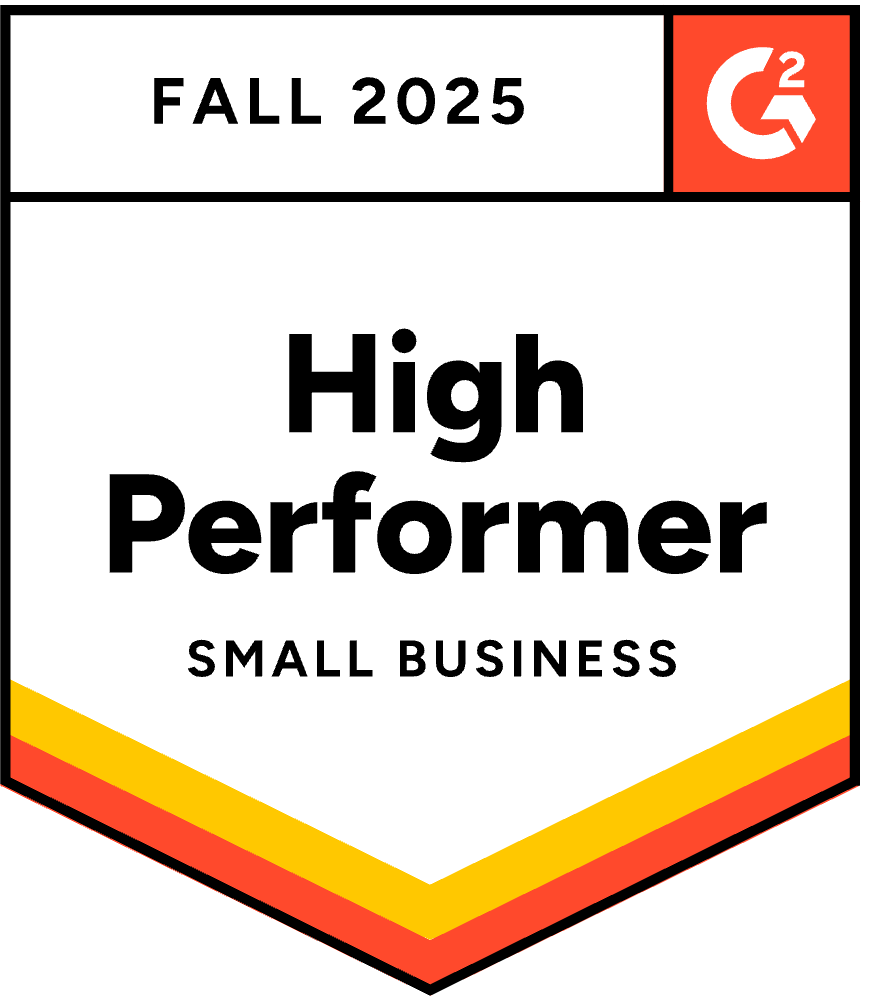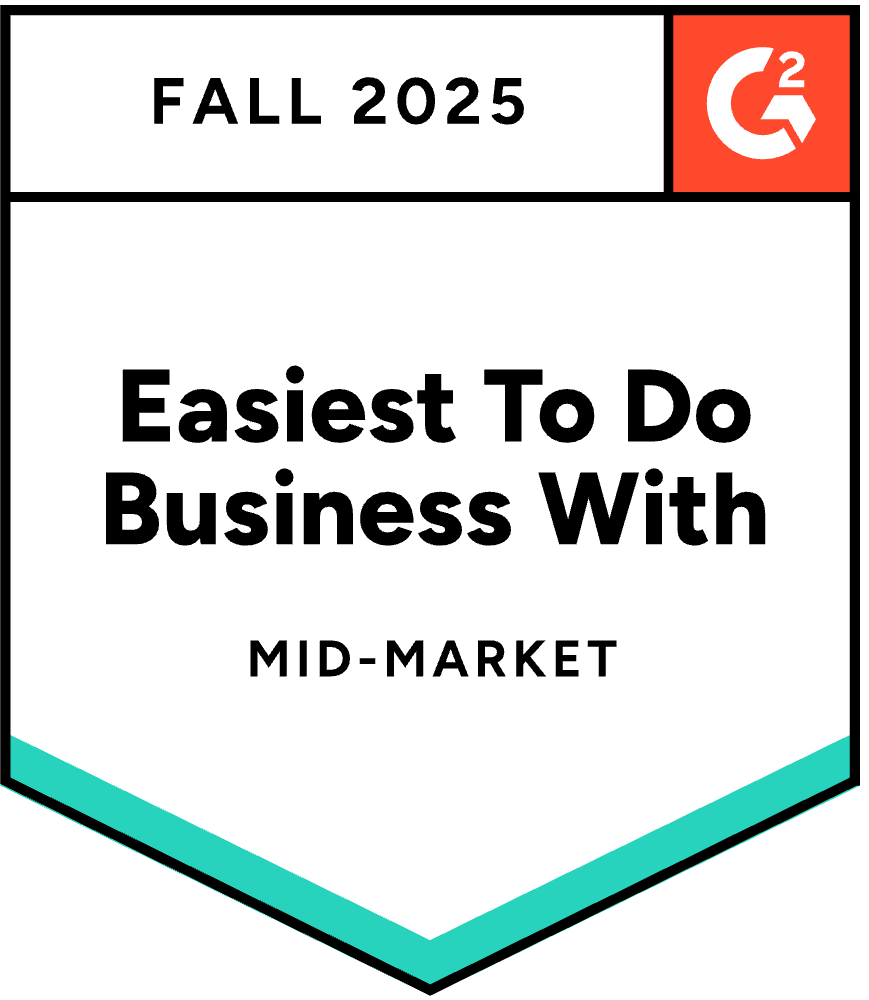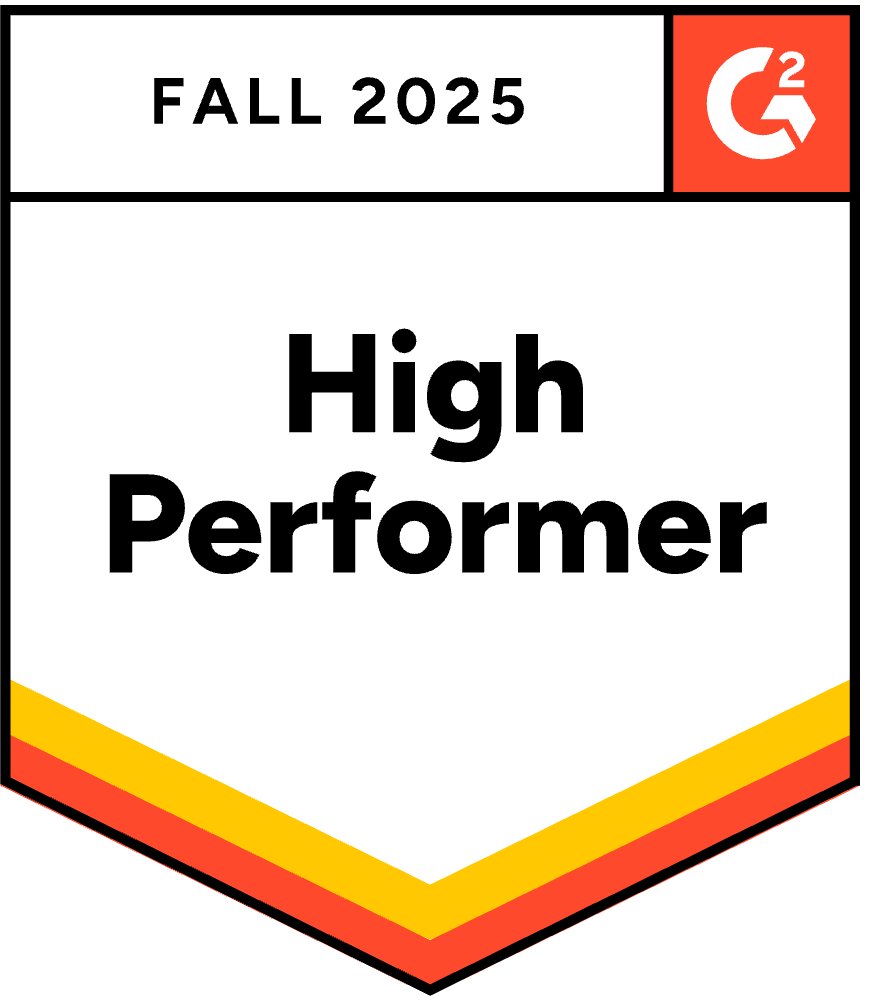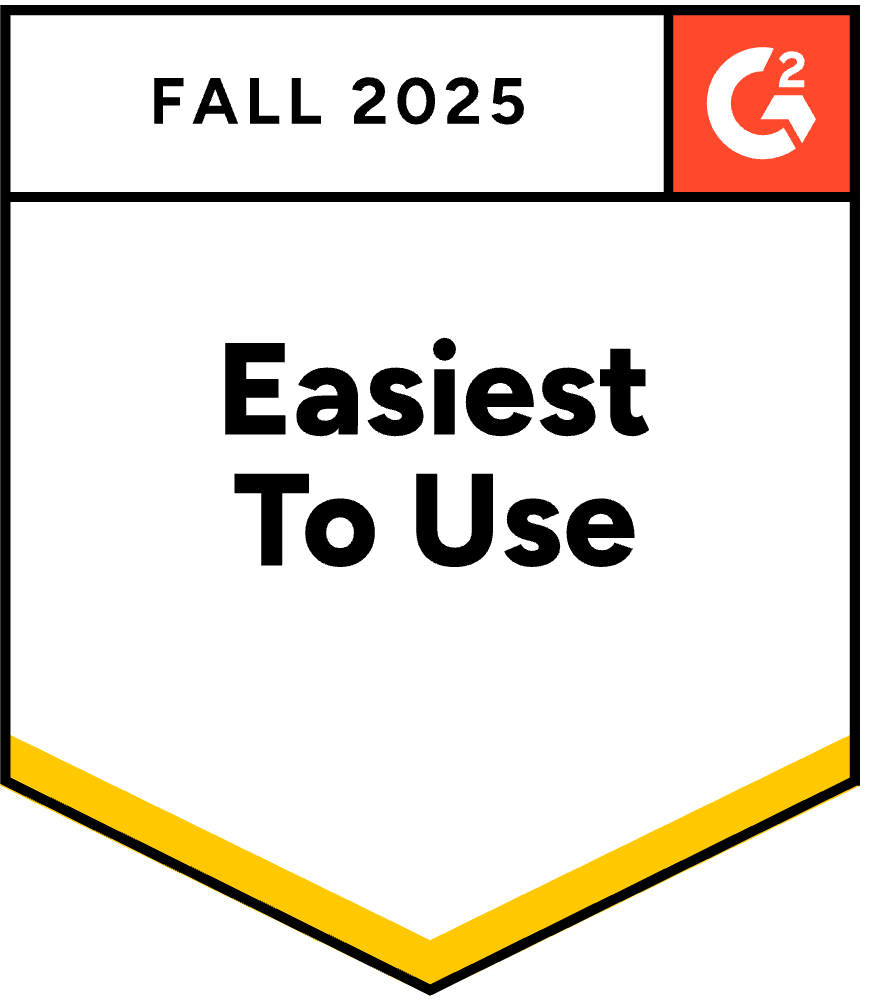5 Best AI Business Proposal Writer Tools in 2025
October 2, 2025
By
Evie Secilmis
.jpg)
The quality and speed of your proposal can make or break a deal. Your team is brilliant at crafting compelling solutions, but are they bogged down by the tedious work of just assembling the document? This is where an ai business proposal writer comes in. Think of it as the ultimate business proposal assistant. It’s not about replacing your team’s expertise; it’s about augmenting it. The best ai for proposal writing handles the heavy lifting, freeing up your people to focus on what they do best: understanding client needs, personalizing the message, and building a winning strategy. We'll walk through how to find the right tool and use it to give your team a decisive edge.
Key Takeaways
- Use AI for Efficiency, Humans for Strategy: An AI writer excels at generating accurate first drafts from your content library, saving countless hours. Your team's expertise remains essential for personalizing the proposal, refining the strategy, and ensuring the final document speaks directly to the client's needs.
- Choose a Tool That Fits Your Workflow: The right AI writer is one that solves your team's specific challenges and integrates seamlessly with your existing systems, like your CRM and cloud storage. Prioritize compatibility and security over a long list of features to ensure smooth adoption.
- Invest in Setup and Process for Long-Term Success: An AI writer is only as good as the information you give it. Take the time to build a high-quality content library, train your team on best practices, and establish a mandatory review process to guarantee both quality and brand consistency in every proposal.
The Role of a Business Proposal Writer
Before we talk about tools and automation, it’s important to understand the human element behind a great proposal. A business proposal writer is a specialist who crafts persuasive documents designed to win new clients, secure funding, or land contracts. They are the storytellers of the sales world, translating your company’s value into a narrative that resonates with a potential customer. They work closely with sales, marketing, and subject matter experts to gather all the necessary information, understand the client's specific needs, and then articulate a clear, compelling response to formal requests like RFPs (Requests for Proposal). Their job is to make sure your solution doesn't just meet the requirements on paper but also stands out as the obvious choice.
Core Responsibilities and Daily Tasks
A proposal writer’s day is a mix of research, writing, and project management. They start by dissecting the client's request to understand the core problem that needs solving. This involves collaborating with internal teams to gather technical specifications, pricing details, and case studies that prove your capabilities. According to Loopio, a proposal writer "creates convincing documents...to help businesses win new clients." They then structure this information into a coherent and persuasive proposal, ensuring every section is clear, concise, and directly addresses the client’s pain points. They are also responsible for managing deadlines, coordinating reviews with stakeholders, and making sure the final document is polished, professional, and error-free before it goes out the door.
Essential Skills for a Proposal Writer
To succeed in this role, a person needs more than just strong writing skills. They must be excellent project managers, capable of juggling multiple deadlines and stakeholder inputs without letting anything slip through the cracks. Strong research and analytical abilities are also critical for digging into a client’s needs and tailoring the proposal accordingly. Attention to detail is non-negotiable; a single typo or incorrect figure can undermine the credibility of the entire document. Finally, a great proposal writer possesses strategic thinking skills. They don’t just answer questions—they frame the answers in a way that aligns with the buyer's goals and positions their company as the ideal partner for success.
The Career Path of a Proposal Writer
While many proposal writers have a degree in a related field like English, Communications, or Marketing, it’s not always a strict requirement. Many companies place a higher value on practical experience and a strong portfolio of past work. A proven track record of creating winning proposals often speaks louder than a diploma. The career path can start in a junior role, assisting senior writers, and progress to a proposal manager who oversees the entire response process for a company. For those looking to enter the field, building a portfolio with sample proposals or freelance projects can be a great way to demonstrate your skills and land your first role.
Anatomy of a Winning Business Proposal
A winning business proposal is more than just a price list; it's a strategic document that convinces a potential client that you are the right partner to solve their problem. It should be well-structured, easy to read, and completely focused on the customer. Every section needs to work together to tell a compelling story about how your solution will deliver value and help them achieve their goals. Think of it as a roadmap that guides the reader from their current challenge to their desired future state, with your company as the trusted guide. A clear structure not only makes the document easier to evaluate but also shows that you are organized, professional, and respectful of the client's time.
Key Sections to Include
Every proposal is unique, but most winning documents share a common structure. You should always start with an introduction that states the purpose of the proposal, followed by an executive summary that provides a high-level overview of the client's problem and your proposed solution. This is often the most-read section, so make it count. From there, you'll detail your understanding of the client's needs, present your specific products or services as the solution, and outline the implementation plan. Finally, include a clear breakdown of the costs, the expected benefits or ROI, and information about your company to build credibility and trust.
Solicited vs. Unsolicited Proposals
Proposals generally fall into two categories: solicited and unsolicited. A solicited proposal is a direct response to a request, such as an RFP, RFI (Request for Information), or RFQ (Request for Quotation). In this case, the client has already identified a need and is actively seeking solutions. An unsolicited proposal, on the other hand, is sent to a potential client who has not requested one. This is a proactive sales tool used to generate new business by identifying a potential need the client may not have even recognized yet. Both types require a deep understanding of the customer, but the approach and tone will differ significantly.
The Proposal Creation Process
Creating a high-quality proposal is a multi-step process that requires careful planning and execution. It begins with in-depth research to understand the client, their industry, and their specific challenges. Once you have a solid grasp of their needs, you can begin outlining the proposal and gathering the necessary content from your internal knowledge base. This is where having a centralized content library becomes invaluable, as it ensures all information is accurate and up-to-date. After drafting the proposal, it must go through a rigorous review process with key stakeholders to check for accuracy, clarity, and consistency before it's finalized and sent to the client.
Hiring a Human Proposal Writer
If your team is consistently struggling to keep up with proposal demands, bringing on a dedicated writer might be the right move. A skilled proposal writer can take ownership of the entire response process, freeing up your sales and technical experts to focus on strategy and client relationships. Whether you hire a full-time employee or a freelancer, the goal is to find someone who can quickly learn your business, adopt your brand voice, and consistently produce high-quality documents that help you win more deals. This investment can pay for itself by improving the quality of your submissions and increasing your team's overall capacity to respond to new opportunities.
Where to Find Talent
When you're ready to hire, there are several places to find qualified candidates. For full-time roles, traditional job boards and professional networks like LinkedIn are great starting points. If you're looking for more flexibility, freelance platforms can connect you with experienced writers for specific projects. Websites like Upwork and Toptal have vast networks of freelance proposal writers with expertise across various industries. When searching, be sure to look for candidates who have a proven track record in your specific industry, as their familiarity with the terminology and common client challenges will allow them to get up to speed much faster.
Evaluating Potential Hires
Once you have a shortlist of candidates, the evaluation process is key to finding the perfect fit. Don't just rely on their resume; always ask for a portfolio with examples of their past work. As Technical Writer HQ advises, reviewing their writing samples is the best way to assess their style, clarity, and overall quality. During the interview, ask them to walk you through their process for a past project. How did they collaborate with subject matter experts? How did they handle tight deadlines? Their answers will give you valuable insight into their work ethic, communication skills, and ability to manage complex projects.
Understanding the Costs
The cost of hiring a proposal writer can vary widely based on their experience, your industry, and the complexity of your proposals. A full-time, in-house proposal writer will come with a salary and benefits, while freelancers typically charge an hourly or per-project rate. According to some industry sources, freelance rates can range from $30 to over $100 per hour. While it may seem like a significant expense, it's important to weigh it against the cost of your team's time and the potential revenue from the deals a professional writer can help you win. A great writer isn't a cost; they're an investment in your sales success.
So, What Exactly Is an AI Business Proposal Writer?
If you’ve ever felt buried under a mountain of RFPs, you know how much time goes into crafting a winning proposal. An AI business proposal writer is a tool designed to lighten that load. Think of it as a smart assistant that helps you create professional, persuasive documents faster. Instead of starting from scratch every single time, you can use AI to generate drafts, pull in accurate data, and automate the more repetitive parts of the process, freeing you up to focus on strategy and personalization.
How Does an AI Proposal Writer Actually Work?
At its core, an AI proposal writer uses machine learning to analyze your inputs and generate relevant content. It’s not a magic button, though. The quality of the output depends entirely on the quality of the input. Your team will need to learn how to write effective prompts, manage a central content library, and integrate the AI into your existing proposal workflow. The tool can pull from your past successful proposals, case studies, and product information to assemble a new document, ensuring consistency and accuracy while dramatically cutting down on drafting time.
Setting Realistic Expectations for Your AI Writer
When you use an AI proposal writer, you can expect it to generate a solid first draft based on your content library and previous responses. This is a huge time-saver, especially for complex documents like RFIs, SOWs, and security questionnaires. Features like a proposal builder and smart content tagging keep your entire team aligned and compliant. Everyone works from the same source of truth, which means no more hunting for the latest product specs or approved legal language. The result is a faster, more consistent process that lets your team handle a higher volume of proposals without sacrificing quality.
A Quick Word on Quality and Accuracy
One of the biggest benefits of using an AI-powered tool is its ability to improve accuracy. These systems are designed to automate repetitive tasks, which minimizes the risk of human error. By pulling information from a pre-approved and up-to-date content library, the AI ensures every proposal contains the correct data. This allows your team to shift its focus from tedious fact-checking to the more strategic elements of the proposal, like tailoring the solution to the client’s specific needs and crafting a compelling executive summary. The AI handles the groundwork, so you can concentrate on the work that wins deals.
The Best AI for Proposal Writing: Our Top Picks
Finding the right AI proposal assistant can feel like a huge task, but it really comes down to matching a tool's strengths to your team's specific needs. Are you responding to complex, 100-page RFPs, or are you sending out straightforward project proposals? Do you need a tool that integrates with your CRM, or is a standalone generator enough?
To help you sort through the options, I’ve put together a comparison of some of the top AI business proposal writers out there. Each one offers something a little different, so think about your team’s workflow and which features would make the biggest impact on your day-to-day.
HeyIris.ai
If your team handles more than just simple proposals, HeyIris.ai is built for you. It’s a complete AI deal desk solution designed to manage a wide range of documents, including RFPs, RFIs, SOWs, and security questionnaires. The platform excels at generating accurate first drafts in a fraction of the time it would take manually. One of its standout features is its ability to proactively identify and flag outdated information across all your connected systems, ensuring every proposal you send is current and correct. This makes it a powerful choice for sales teams focused on improving win rates and managing a high volume of complex deals.
HyperWrite
For teams that need to create professional proposals quickly, HyperWrite’s Proposal Generator is a solid option. Powered by advanced models like GPT-4, this tool streamlines the writing process by creating a comprehensive proposal from just a company name and a short description. It’s designed to produce persuasive, well-structured documents with minimal input, making it perfect for when you need a polished draft in a hurry. Think of it as a great starting point for standard business proposals that don't require deep technical knowledge or integration with complex sales systems.
Piktochart
If design and visual appeal are top priorities for your proposals, Piktochart’s AI Proposal Generator is worth a look. This tool specializes in turning your ideas or existing documents into fully designed proposals, complete with text and images. You can feed it simple prompts or upload a document, and the AI handles the layout and formatting. This is ideal for creative agencies, consultants, or any business that wants to present a strong brand identity and make a memorable visual impression. It’s less about managing complex data and more about creating beautiful, custom documents fast.
Bookipi
For small businesses, freelancers, or teams working with a tight budget, Bookipi offers a free AI tool to create business proposals. You can generate a professional document in minutes just by giving the AI a simple prompt. The platform focuses on speed and ease of use, helping you create proposals that look good and align with your brand without any cost. It’s a straightforward solution for anyone who needs to produce proposals efficiently without investing in a more comprehensive, feature-heavy platform. It’s a great way to get started with AI-powered proposal writing.
Easy-Peasy.AI
Similar to Bookipi, Easy-Peasy.AI provides a free AI business proposal generator aimed at helping you create impressive, custom proposals quickly. A major plus is that you can start using it right away without needing a credit card to sign up, which makes it completely risk-free to try. This tool is perfect for users who want to experiment with an AI writer to see how it fits into their workflow. It’s a simple, accessible option for generating proposals without any financial commitment, making it another excellent choice for individuals and small teams.
Your Checklist for Choosing an AI Proposal Writer
Choosing an AI proposal writer isn't just about finding a tool that can string sentences together. It's about finding a partner that fits into your sales process and helps your team win more deals. As you evaluate your options, focus on the features that will make a real difference in your day-to-day workflow. The goal is to find a tool that handles the heavy lifting, so your team can focus on strategy and building client relationships. Here are the key areas to consider.
Quality of Content and Templates
At its core, an AI proposal writer should save you time. Look for a tool that can quickly generate high-quality first drafts based on your inputs. The best platforms offer a library of pre-built templates for different proposal types, like RFPs, SOWs, and security questionnaires. These templates give you a solid foundation to build from, so you’re never starting from a blank page. An effective AI proposal writing assistant doesn't just fill in the blanks; it helps you write stronger, more persuasive content by automating research and suggesting relevant information.
Can You Customize It to Your Brand?
A generic proposal is a losing proposal. Your AI writer must allow for deep customization to ensure every document reflects your brand voice and speaks directly to the client's needs. The tool should make it easy to tailor content, swap out case studies, and address specific pain points mentioned in the request. Top-tier solutions can even analyze the request documents to suggest personalized content, ensuring your proposal feels like it was written specifically for that client. This level of personalization shows you’ve done your homework and significantly increases your chances of winning.
How Well Does It Integrate with Your Workflow?
An AI tool should simplify your tech stack, not complicate it. Before you commit, verify that the platform integrates smoothly with the systems your team already uses every day. Think about your CRM, cloud storage (like SharePoint or Google Drive), and communication tools (like Slack or Teams). Seamless integration with your existing tech is non-negotiable because it creates a single source of truth for your content. This prevents your team from hunting down information or manually copying and pasting data, which saves time and reduces the risk of errors.
Is Your Data Safe and Private?
You'll be feeding sensitive company and client information into your AI proposal writer, so security is paramount. Don’t just take a company’s word for it—look for concrete proof of their commitment to data protection. Check for security credentials like SOC 2 or ISO 27001 certifications and confirm their compliance with data privacy regulations like GDPR. Your chosen tool should offer robust security features, including data encryption and access controls, to ensure your confidential information stays that way.
Can You Track Your Proposal's Performance?
How do you know if your proposals are actually working? The right AI tool will give you the data to answer that question. Look for platforms that offer analytics on your proposal process. This could include tracking which content gets used most often, how long it takes to create a proposal, and even your win rates over time. These insights are incredibly valuable for refining your sales strategy. By understanding what content resonates with clients, you can continuously improve your templates and increase your effectiveness.
Does It Support Team Collaboration?
Proposal writing is a team sport. Your AI writer should function as a central workspace where your sales team, subject matter experts, and legal reviewers can work together efficiently. Look for features that support teamwork, such as real-time commenting, version control, and clear approval workflows. These tools eliminate the chaos of endless email chains and conflicting document versions. By streamlining the review process, you can get proposals out the door faster and ensure everyone is aligned on the final product.
Will It Help You Stay Compliant?
For teams in highly regulated industries like finance, healthcare, or government contracting, compliance isn't optional. A single mistake can get your proposal disqualified. Some advanced AI writers offer built-in compliance monitoring to prevent this. These systems can automatically scan your documents to ensure they meet all industry standards and specific requirements laid out in the RFP. This feature acts as a crucial safety net, flagging potential issues before you hit send and giving you peace of mind.
How to Pick the Right AI Writer for Your Team
Finding the right AI proposal writer can feel like a huge task, but it really comes down to a few key considerations. Instead of getting distracted by every bell and whistle, focus on what will actually make a difference for your team's workflow and your company's bottom line. By breaking down your decision-making process into these four areas, you can confidently select a tool that not only meets your needs today but also grows with you.
First, Define What Your Team Needs
Start by looking inward. What are the biggest hurdles in your current proposal process? Are you spending too much time searching for approved content? Is maintaining brand consistency a constant struggle? Talk to your sales and proposal teams to understand their daily frustrations. Matching a tool's strengths to your team's specific needs is the first step to success. A clear understanding of your pain points will help you identify which AI proposal writing assistant has the right features to solve them, turning a daunting decision into a strategic choice.
Next, Check for Technical Compatibility
The best AI writer is one that fits into your workflow, not the other way around. Before you commit, verify that the tool integrates seamlessly with the systems you already use every day, like your CRM, cloud storage, and communication platforms. A tool with robust integration capabilities prevents disruptive workflow changes and ensures a smooth transition. Also, don't overlook security. Your proposals contain sensitive company and client information, so prioritize a platform with strong data protection protocols and compliance certifications to keep your data safe.
Then, Find a Tool That Fits Your Budget
While price is always a factor, think about the return on investment (ROI). A cheaper tool that saves you five hours a week is less valuable than a slightly more expensive one that saves you 20. Look at different pricing models—some charge per user, while others offer tiered plans with more features at higher levels. Calculate the potential time savings and increased win rates to understand the true value. A powerful AI writer can significantly shorten sales cycles, which often means the tool pays for itself surprisingly quickly.
Finally, Prioritize Support and Training
Even the most intuitive software has a learning curve. Your team will need time and training to learn how to use the new tool effectively, from writing good prompts to managing the content library. Look for a provider that offers comprehensive onboarding, clear documentation, and responsive customer support. A strong partnership with your software provider ensures your team feels confident and empowered to use the AI writer to its full potential. This support is crucial for long-term adoption and getting the most out of your investment.
Getting the Most from Your AI Proposal Writer
So, you’ve chosen an AI proposal writer. That’s a fantastic first step, but the real magic happens when you integrate it thoughtfully into your team’s daily operations. Simply dropping a new tool into the mix without a plan can lead to confusion and slow adoption. To get the most out of your investment, you need a clear strategy for implementation and ongoing use. It’s about creating a system where the AI works as a true partner to your sales team, not just another piece of software they have to learn. This means going beyond the initial purchase and actively shaping how the technology supports your goals.
Think of it as onboarding a new, incredibly efficient team member. You wouldn’t just give them a desk and a login; you’d want to set them up for success, teach them how you work, and establish clear processes for collaboration. The same principles apply here. By focusing on a few key practices—from initial setup and team training to creating a solid review process—you can ensure the AI writer becomes an indispensable part of your proposal workflow. This approach helps your team build confidence in the tool, maintain high standards for your proposals, and ultimately, start closing more deals faster. Let’s walk through the practical steps to make that happen.
Setting Up Your AI Writer for Success
The best way to get started is by making sure the tool fits your team, not the other way around. Before you dive in, take the time to configure the software to align with your existing sales cycle. Look beyond the flashy features and prioritize an AI assistant with robust security and seamless integrations that connect with your current tech stack, like your CRM and content repositories. This initial setup is crucial because it reduces friction and makes the tool feel like a natural extension of your workflow. By focusing on the specific documents your team handles most—whether it's RFPs, SOWs, or security questionnaires—you can tailor the platform to deliver immediate value.
How to Write Prompts That Get Results
Your AI writer’s output is directly tied to the quality of your input. Vague instructions will give you generic results, so learning to write effective prompts is a skill your team will want to develop. Be specific and provide as much context as possible. Instead of asking it to "write a proposal," guide it with details like, "Write an executive summary for a 5-page proposal for a mid-sized tech company, highlighting our key differentiators in data security and 24/7 customer support." The more detailed your prompt, the more relevant and personalized the generated content will be. This helps the AI write stronger proposals that are tailored to each client.
Getting Your Team Onboard and Trained
A new tool is only effective if your team feels confident using it. Set aside dedicated time for training sessions that go beyond a basic product demo. Your team will need guidance on how to write effective prompts, manage the central content library, and fit the AI into their existing proposal process. Encourage them to experiment and ask questions. The goal is to empower them to see the AI as a reliable assistant that handles the heavy lifting, freeing them up to focus on strategy and client relationships. This investment in training pays off with smoother adoption and better results down the line.
Create a Human-in-the-Loop Review Process
AI is a powerful tool for generating first drafts quickly, but it’s not meant to replace human expertise. It’s essential to establish a clear review process for all AI-generated content. This ensures every proposal is accurate, aligns with your brand voice, and is strategically sound before it reaches a client. Think of the AI as the tool that automates the repetitive, time-consuming tasks, which in turn allows your team to focus on the high-value elements—like personalization and strategic positioning. A human touch is what turns a good proposal into a winning one, so make sure a final review is a non-negotiable step in your workflow.
Keep a Close Eye on Performance
How do you know if your new AI writer is actually making a difference? By tracking its performance. Define key metrics to monitor from the start, such as the time it takes to create a proposal, the team's adoption rate, and, most importantly, your win rates. Many AI tools offer analytics that provide insights into what’s working and what isn’t. Use these data-informed insights to refine your templates, improve your prompts, and make smarter decisions. Watching these metrics improve over time not only proves the tool's ROI but also helps you find new ways to optimize your sales process, as shown in various case studies.
Common Roadblocks (and How to Get Past Them)
Adopting any new tool comes with a learning curve, and AI proposal writers are no exception. While the benefits are huge, it’s smart to go in with your eyes open to potential hurdles. The good news is that with a little planning, these challenges are completely manageable. Let's walk through some common issues and, more importantly, how to solve them so your team can get the most out of your new AI assistant.
What If the Content Isn't Quite Right?
A major concern for any team is whether an AI can produce content that’s actually good—accurate, relevant, and persuasive. Will it sound like a robot wrote it? The key is to shift your mindset. An AI writer isn't here to replace your team's expertise; it's here to give them a running start. The best AI tools reduce the time spent on repetitive tasks by generating a solid first draft based on your past responses and internal data.
How to solve it: The solution lies in curation and process. Treat the AI-generated text as a first draft that your subject matter experts will review and refine. The quality of the output is directly tied to the quality of your input, so focus on building and maintaining a robust, up-to-date content library for the AI to pull from.
What If It Doesn't Sound Like You?
Your brand voice is your company’s personality, and the last thing you want is for your proposals to sound generic. It’s a valid worry that an AI might strip away the unique tone and style you’ve worked so hard to cultivate. Finding the right AI proposal assistant is all about matching a tool's strengths to your team's specific needs, and that includes its ability to adapt to your voice.
How to solve it: Look for an AI writer with strong customization options. Before you commit, see if you can "train" the tool by feeding it examples of your best proposals, marketing copy, and style guides. Establish a clear review process where a human editor ensures every proposal aligns with your brand voice before it goes out the door.
How to Encourage Your Team to Use It
New technology can be met with skepticism. Your team might worry about job security or feel overwhelmed by having to learn another new system. Simply dropping a new tool into their laps and expecting them to use it is a recipe for failure. A smooth transition requires a thoughtful approach that gets everyone on board and excited about the possibilities.
How to solve it: Create a structured implementation plan. Your team will need time and training to learn how to use the tool effectively and fit it into their existing workflow. Start with a small pilot group, gather feedback, and create internal champions who can share success stories. Most importantly, frame the AI writer as a tool that frees them from tedious work so they can focus on high-value strategy and client relationships.
Addressing Data Privacy Concerns Head-On
When you’re handling sensitive client information and proprietary company data, security is non-negotiable. Uploading this information into a third-party AI platform can feel risky if you don't know how it's being stored, protected, and used. It’s crucial to understand the security measures a potential vendor has in place before you give them access to your data.
How to solve it: Do your due diligence. Vet any AI proposal writer for their security and compliance standards. Ask direct questions about data encryption, access controls, and privacy policies. Choose a reputable provider that is transparent about its security protocols. Some advanced platforms even use AI to help with compliance monitoring, ensuring every proposal meets all necessary standards before it's even submitted.
Avoiding Over-Reliance on Your AI Writer
As your team gets comfortable using an AI writer, there's a risk of becoming over-reliant on it. If the AI becomes a crutch rather than a tool, critical thinking and institutional knowledge can start to fade. The goal is to augment your team's abilities, not replace them entirely. This balance is key to long-term success and sustainable growth.
How to solve it: Set clear guidelines on how and when to use the AI. Emphasize that the tool is there to handle the heavy lifting—automating repetitive tasks and enhancing accuracy—which allows your team to focus on the strategic elements that truly win deals. Encourage continuous learning and skill development outside of the tool. The AI should be a powerful partner, but your team's expertise should always be the driving force behind every winning proposal.
Advanced Tips to Fine-Tune Your AI Writer
Once you’ve chosen your AI proposal writer, the next step is to weave it into the fabric of your sales process. Simply having the tool isn’t enough; you need to refine and adapt it to your team’s unique needs to see the best results. Think of your AI writer as a new team member—it needs guidance, training, and feedback to perform at its peak. By continuously fine-tuning its output and processes, you can transform a helpful tool into an indispensable asset that consistently produces high-quality, winning proposals. This ongoing optimization ensures you’re not just speeding up your workflow but also improving its quality.
Continuously Optimize Your Templates
Your AI writer is only as good as the foundation you give it. Start by treating your existing proposal templates not as rigid structures but as dynamic starting points. Work with your team to identify the strongest sections of your past winning proposals and use them to build a robust content library. While AI tools can make the process faster and automate research, your team will need some time to learn how to write effective prompts and manage this library. This initial investment helps the AI learn your style and priorities, ensuring the first drafts it generates are more aligned with your brand and strategy, ultimately refining your proposal workflow.
Create a Smarter Integration Strategy
For an AI writer to be truly effective, it must fit into your existing systems without causing friction. Look beyond flashy features and prioritize a tool that offers seamless integrations with the tech your team already uses, like your CRM and cloud storage. The goal is to select a tool that adapts to your workflow, not the other way around. A well-integrated AI writer can pull customer data, product information, and past proposal content automatically, saving your team from the tedious task of switching between applications and manually copying information. This creates a more fluid and efficient process from start to finish.
Strengthen Your Quality Control Process
AI is fantastic at handling the heavy lifting, but the final proposal should always have a human touch. Establish a clear quality control process where team members review every AI-generated draft. AI-powered agents are transforming proposal writing by automating repetitive tasks and enhancing accuracy, which frees up your team to focus on the strategic elements that close deals. This review stage isn't about re-writing the whole document; it's about checking for brand voice consistency, personalizing the content for the specific client, and ensuring the proposal’s core message is compelling and clear. This human-AI partnership produces the best of both worlds: speed and strategy.
Turn Performance Analytics into Action
The best way to fine-tune your AI writer is to listen to the data. Use the analytics features within your tool to track key metrics like proposal creation time, section-by-section engagement, and, most importantly, win rates. This information provides real-time insights that help your team make smarter, data-informed decisions. If you notice certain sections are consistently edited or that proposals for a specific industry have lower win rates, you can use that feedback to refine your templates and prompts. This creates a continuous improvement cycle that helps you improve deal volume and win rates over time.
Related Articles
- Best AI Proposal Writing Assistants for Winning Proposals
- 13 Best Business Proposal AI Generators to Close Deals
- Best AI Proposal Assistant Software: A Complete Guide
Frequently Asked Questions
Will an AI proposal writer replace my team? Not at all. Think of it as a powerful assistant, not a replacement. The goal is to automate the most time-consuming parts of proposal writing—like hunting for the right content and formatting documents. This frees up your team to focus on the high-value work that actually wins deals, such as personalizing the solution, building client relationships, and crafting a compelling strategy. The AI handles the groundwork so your experts can shine.
How much effort does it take to get started with an AI writer? There is an initial setup period, and it’s worth doing right. You’ll want to connect the tool to your existing systems, like your CRM and content libraries, and spend some time building out your core templates. The quality of the AI’s output is directly related to the quality of the information you give it. A good provider will offer training and support to make this process as smooth as possible, ensuring your team feels confident from day one.
Can an AI writer truly understand our complex business and clients? An AI writer learns from the information you provide. It isn't pulling generic content from the web; it's using your past winning proposals, case studies, and product documentation to generate drafts. This is why building a strong, curated content library is so important. The AI creates a highly relevant first draft, and then your team adds the final layer of strategic personalization to speak directly to each client's unique needs.
Is it safe to upload our sensitive company and client data? This is a critical question, and the answer depends on the provider you choose. Reputable platforms prioritize security and should be transparent about their protocols. Before committing to a tool, look for security credentials like SOC 2 certification and confirm that their data privacy policies meet your standards. A trustworthy AI writer will use robust encryption and access controls to ensure your confidential information remains secure.
What's the real difference between a free tool and a comprehensive platform? Free tools are excellent for generating simple, one-off proposals and can be a great way to experiment with AI. A comprehensive platform, on the other hand, is designed to manage your entire deal workflow. It offers deep integrations with your tech stack, advanced collaboration features for your team, robust security, and performance analytics. It’s an investment in a system that streamlines your process and helps you win more deals, rather than just a tool for writing a single document.
Share this post
Link copied!



